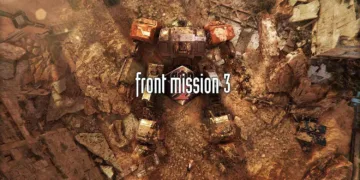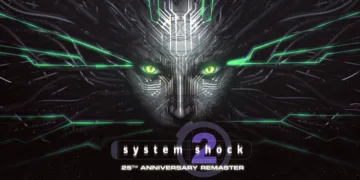“New Jack Fury” unfolds like a bootleg VHS gem resurrected from late-night cable, drenched in neon hues and pulsing synth. In a fictional urban sprawl dubbed New Jack City, ex-cop Dylan Gamble (Andre Hall) wakes to a shattered career after an on-duty incident gone spectacularly wrong.
When his girlfriend Tanisha (Ally Renee) vanishes, Gamble stages a one-man rescue—only to enlist two unlikely allies: Hendrix Moon (Paul Wheeler), a slick club owner armed with cutting wit, and Leslie Kindall (Dean “Michael Trapson” Morrow), a moonwalking assassin channelling Michael Jackson.
Writer-director Lanfia Wal deliberately leans into green-screen minimalism, stuttering VHS tracking and faux-commercial bumpers to evoke a renegade energy. Clocking in at 84 minutes, this SXSW premiere feels equal parts pastiche and affectionate homage—a parody steeped in the audiovisual trappings of 1980s action-comedy, yet driven by a sincere DIY spirit.
Visual & Technical Style
Wal transforms blank green backdrops into hyperstylized alleys, arcade scapes and sleazy nightclubs through jagged compositing and pixelated overlays. Occasional cue-mark flashes and intentional color bleeding conjure scratched celluloid textures, while bright pinks, electric blues and deep purples bathe each frame in retro excess.
Every few scenes, the action halts for satirical ad spots—Suga-Drank’s gyrating mascot or cheesy hemorrhoid-cream jingles—interrupting the plot like an afterschool special with attitude. Fight sequences forgo polished choreography in favor of graphic overlays: side-scrolling game levels, surprise miniguns and katanas materialize with digital pop-art flair.
The synthesizer score pays tribute to vintage drum machines, and Foley effects—gunshots, punch impacts—arrive with exaggerated dubbing that occasionally drifts out of sync. Those intentional mismatches highlight resource constraints as part of the joke, inviting viewers to appreciate how Wal’s lo-fi toolkit becomes a creative engine rather than a shortcoming.
Narrative & Character Dynamics
Plot unfolds in episodic beats. First, Gamble’s investigation flips when he smacks his captain with an 18-inch prop—career suicide that triggers Tanisha’s abduction. Stripped of badge and pride, he hunts her captors solo until crossing paths with Hendrix Moon, whose night-club world offers both intel and comic relief. Hendrix’s swagger and rapid-fire insults contrast with Gamble’s deadpan determination, generating electric banter.
Next joins Leslie Kindall, whose moonwalk combat and MJ-inspired wardrobe inject surreal energy. Their journey zigzags through faux-VHS “levels”: battling henchmen in a pixelated wasteland, crashing a synth-soaked strip club, infiltrating Silkwaan Styles’s penthouse lair. Each set-piece lands a mix of slapstick and homage, even as narrative logic warps to sustain the gag.
Dylan Gamble anchors the chaos as the earnest straight man, his moral compass intact amid cartoonish mayhem. Hendrix serves as insurgent ally—worldly, street-smart, quick with a quip—while Leslie functions as living mascot, every MJ flourish heightening absurdity. Silkwaan Styles (Page Kennedy) presides over this neon dystopia with equal parts charm and ruthless bravado, trading deadpan threats and stylized violence. Together, the trio’s chemistry fuels both plot momentum and comedic tension, each character’s distinct rhythm reinforcing the film’s parody ethos.
Tone, Humor & Genre References
“New Jack Fury” exploits 1980s blaxploitation and buddy-cop tropes with gleeful exaggeration: platform boots, oversized sunglasses, cheesy one-liners delivered straight-faced. Running gags—cringy wigs slipping mid-scene, visible cue cards, abrupt continuity errors—underscore an intentional amateur aesthetic.
Without naming titles, the film nods to side-scrolling arcade adventures, late-night cable rough cuts and grindhouse grit, repurposing those influences into a playful satire. Some spoof elements hit hard—fake commercials that lampoon advertising excess—while others lose momentum on repeat.
Yet the film remains self-aware, inviting audiences to relish its lo-fi imperfections as markers of authenticity. In weaving homage and meta-commentary, Wal encourages viewers to embrace the delirious spirit of no-budget action lunacy, reminding us that enthusiasm can trump polish when the joke is sincere.
New Jack Fury premiered at the 2025 SXSW Film & TV Festival.
Full Credits
Director: Lanfia Wal
Writers: Lanfia Wal
Producers and Executive Producers: Lanfia Wal, Van White, Mariah Morgenstern, Denaun Porter, Akino Childrey
Cast: Andre Hall, Page Kennedy, Dean “Michael Trapson” Morrow, Ally Renee, Paul Wheeler, Vincent M. Ward, Shawn Nathan, Wrekless Watson, Ace Vane, James Markham Hall Jr.
Director of Photography (Cinematographer): Jon Rigattieri
Editor: Lanfia Wal
Composer: Mr. Porter & The Planits, White Gold
The Review
New Jack Fury
New Jack Fury captures the wild spirit of 1980s B-movie excess with energetic mockery and genuine affection. Its vibrant green-screen backdrops, pulsing synth score and deadpan performances transform budgetary constraints into comedic fuel. While the gag occasionally outstays its welcome, the film’s blend of punk humor and nostalgic flair delivers enough thrills to entertain genre fans in a group setting.
PROS
- Inventive lo-fi visuals turn green-screen quirks into style.
- Catchy synth-driven score enhances retro mood.
- Strong straight-man performance grounds the absurdity.
- Fake commercials offer spot-on parody.
- Energetic chemistry among the trio keeps momentum.
CONS
- Gag can feel repetitive in longer stretches.
- Slapdash effects sometimes break immersion.
- Humor relies heavily on nostalgia, limiting broader appeal.
- Some bits land unevenly, causing pacing dips.
- Minimal plot depth undercuts emotional stakes.
















































